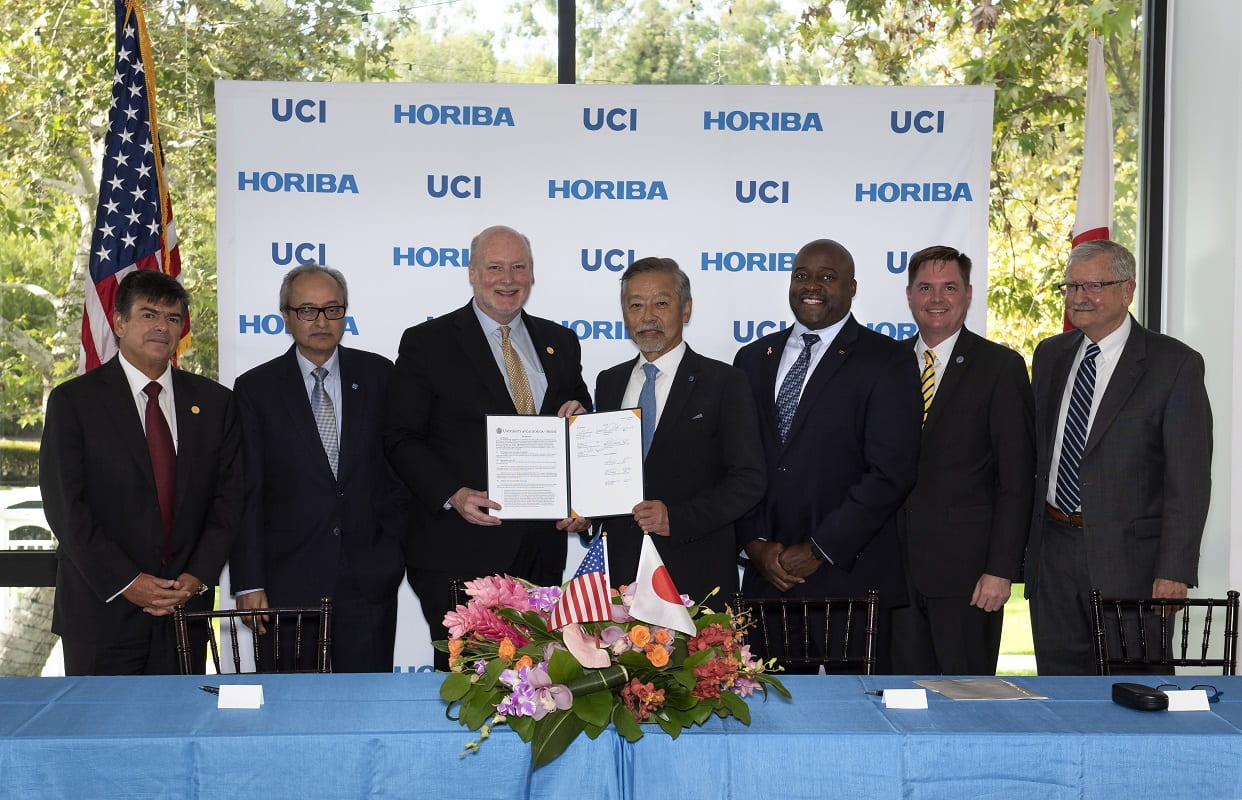Engineering solutions to California’s energy crisis
Scott Samuelsen is leading efforts to create more efficient power sources and distribution strategies while advancing energy conservation
In case you haven’t heard, California is in the midst of an energy crisis.
During the past several months, the state has been in a near-continuous “stage 3” power alert, meaning supplies are barely enough to cover demand. The situation is expected to worsen over the next several months, when temperatures—and the widespread use of air conditioning—reach their peak. The state is projected to experience a 10 percent “under-supply” of energy this summer, according to state and federal agencies.
California was the first state to try to deregulate its energy industry. But instead of deregulating the entire system, all the way from energy producer to energy consumer, legislators chose to loosen regulations on prices between producer and distributor. They did this in an effort to fend off consumer backlash from rocketing utility prices.
The lessons learned in this regional economic and political experiment have implications for the rest of the country, as well.
“The situation in California is similar to that in other states, in that it delineates the need to begin practicing conservation,” says Scott Samuelsen, professor of mechanical engineering and director of the Advanced Power and Energy Program (APEP) atThe Henry Samueli School of Engineering. “It is also similar in terms of the saturation of transportation corridors and the resulting need for alternative transportation strategies.”
But that’s where the similarities end.
“In terms of insufficient supply, California is a special challenge,” says Samuelsen. While states such as Pennsylvania and Texas have effected deregulation strategies that really work, California has been plagued by insufficient generation as well as substantial bottlenecks in transmission, according to Samuelsen.
Scientists at the National Fuel Cell Research Center, part of the Advanced Power and Energy Program, are working to create solutions that will affect the future of energy generation and distribution around the world. They are engineering new technologies for both conserving power and generating energy.
Conservation is Key
No feat of engineering can solve the current energy crisis unless accompanied by a dramatic decrease in consumption. Americans consume three to four times more energy each day than either their European or Japanese counterparts.
“We’re at a point in world evolution where that level of consumption can no longer be justified,” Samuelsen says. “Our energy usage causes environmental stress to the global atmosphere—in the form of smog, acid rain and ozone depletion.”
If consumers relax demand, they will not only decrease environmental impact; they also will lessen the burden on the state’s energy supply and distribution capacity.
Samuelsen cites the university as a case in point. “UCI reduced its demand by 20 percent in just one day during the winter quarter, just by avoiding unnecessary energy use,” he says.
Conservation is not just about remembering to turn off the lights, although that certainly helps. New technology also can help consumers reduce demand. For example, fluorescent and halogen light bulbs are effective in reducing the amount of electricity used and are more cost-effective in the long term than regular lighting.
Emerging Technology
Aside from conservation technology and practice, scientists at UCI are developing technology for a distributed energy model. Samuelsen and his team are working on alternative energy technology, such as fuel cells and microturbine generators. These emerging technologies, referred to collectively as distributed energy resources, will lower electricity costs, improve power quality and reliability, and lessen the impact of power production on the environment.
When power is produced at the site of its use, the waste heat from these devices, which would otherwise be exhausted into the atmosphere, can be collected and used for space heating, water heating and air conditioning.
“The overall efficiency of fuel utilization jumps from 25 percent to more than 75 percent,” Samuelsen says. “With that kind of efficiency, our dependence on fossil fuels is reduced dramatically.”
In addition, the need for other energy sources, such as electricity and natural gas, which are normally used for heating and cooling, is reduced or removed altogether.>
Fuel cells convert fuel to energy two times more efficiently than do existing systems, with less exhaust and virtually no pollution byproduct. They also offer a means of storing energy. They may be attached during the day to photovoltaics, or solar panels, and convert water to hydrogen and oxygen. At night, the hydrogen and oxygen can be used to produce electricity. The water produced in this reaction can be captured and reused the next day with photovoltaics. The water the fuel cells use to convert fuel to energy can also be transformed back into water, to be used for heating or cooling buildings, for example.
Another type of technology that UCI engineers are working on is the microturbine generator. UCI is home to the world’s largest program in gas turbine combustion technology. Gas turbine engines fuel most of the world’s aircraft and produce most of its electricity. Microturbine generators are smaller gas turbine engines, which are ready for market today, and could pave the way for fuel cells to be introduced.
A third type of technology being assessed is the hybrid fuel cell, a combination of fuel cell and gas turbine engine. The U.S. Department of Energy (D.O.E.) calls this “the most exciting technology in electrical generation to occur in more than a decade.” Among its attributes is a high fuel-to-electrical conversion efficiency. A prototype of this technology is now being tested at the National Fuel Cell Research Center. The 220-kw system, developed by Edison International and Siemens-Westinghouse, has broken world records in conversion efficiency.
Future Vision: Power Park
The ultimate goal of research at the Advanced Power and Energy Program is better utilization of renewable energy sources, such as solar, wind and biomass. Visitors can catch a glimpse of this future vision at University Research Park, a research and industrial area adjacent to the UCI campus, where fuel cells, microturbine generators and photovoltaics are providing power to corporate tenants. The park was designated as a “Power Park” in May 2000, when the D.O.E. turned the area into a showcase facility for the demonstration and evaluation of next-generation power and energy technologies.
The Irvine Company, Southern California Gas Company, Southern California Edison and UCI have provided infrastructure to make the park a “living laboratory” for testing advanced power and energy technologies. As the environmentally sensitive and energy efficient technologies emerge from research labs, they can be deployed in the living-laboratory setting of the research park. The initiative paves the way for this and other partnerships among government, industry and universities to speed the commercial viability and acceptance of new energy generation and distribution technologies. The park is currently in a transitional phase between preparation and formal implementation.
There are two major projects being designed for the park. In one case, two buildings are being prepared for microturbine generator capacity to provide power generation to the entire complex. Another is a microturbine complex that will support the power requirements of an existing client.
“This is a dramatic proof of concept,” Samuelsen says. “We are assessing the manner by which this technology should be integrated into the infrastructure of a major office complex.”
As the world changes from a central to a distributed energy model, UCI researchers are at the forefront. Samuelsen estimates that the distributed model will account for more than 20 percent of the total energy produced by the year 2010.
“There really is a need for both models today,” he says. “The best scenario would be a combination—distributed energy supplies in homes, plus a central power source that connects via wires to the home. The technology works in both places, and both models are clean.”
In 2000, APEP landed a contract in Vision 21, the D.O.E. program that addresses the next generation of central power generation plants. Using analytical tools recently developed by the D.O.E., APEP is developing and analyzing thermodynamic cycles that will yield a quantum leap in efficiency through the capture and utilization of waste heat. From these analyses, candidate cycles will be selected for detailed evaluation and deployment. Both natural gas and coal operation are encompassed in the $1.5 million contract.

